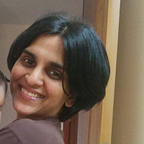If our mother’s cells have done so much for medicine, how come her family can’t afford doctors?
When people ask — and seems like people always be askin to where I can’t never get away from it — I say, Yeah, that’s right, my mother name was Henrietta Lacks, she died in 1951, John Hopkins took her cells and them cells are still livin today, still multiplyin, still growin and spreadin if you don’t keep em frozen. Science calls her HeLa and she’s all over the world in medical facilities, in all the computers and the Internet everywhere.
When I go to the doctor for my checkups I always say my mother was HeLa. They get all excited, tell me stuff like how her cells helped make my blood pressure medicines and antidepression pills and how all this important stuff in science happen cause of her. But they don’t never explain more than just sayin, Yeah, your mother was on the moon, she been in nuclear bombs and made that polio vaccine. I really don’t know how she did all that, but I guess I’m glad she did, cause that mean she helpin lots of people. I think she would like that.
But I always have thought it was strange, if our mother cells done so much for medicine, how come her family can’t afford to see no doctors? Don’t make no sense. People got rich off my mother without us even knowin about them takin her cells, now we don’t get a dime. I used to get so mad about that to where it made me sick and I had to take pills. But I don’t got it in me no more to fight. I just want to know who my mother was.”
This was the voice of Deborah, daughter of Henrietta Lacks, from the book “The Immortal Life of Henrietta Lacks” by Rebecca Skloot.
Henrietta died in 1951 from a vicious case of cervical cancer, Defler (the instructor) told us. But before she died, a surgeon took samples of her tumor and put them in a petri dish. Scientists had been trying to keep human cells alive in culture for decades, but they all eventually died. Henrietta’s were different: they reproduced an entire generation every twenty-four hours, and they never stopped. They became the first immortal human cells ever grown in a laboratory. “Henrietta’s cells have now been living outside her body far longer than they ever lived inside it,” Defler said. If we went to almost any cell culture lab in the world and opened its freezers, he told us, we’d probably find millions — if not billions — of Henrietta’s cells in small vials on ice.
“HeLa cells were one of the most important things that happened to medicine in the last hundred years,” Defler said. Then, matter-of-factly, almost as an afterthought, he said, “She was a black woman.” He erased her name in one fast swipe and blew the chalk from his hands. Class was over. As the other students filed out of the room, I sat thinking, That’s it? That’s all we get? There has to be more to the story. I followed Defler to his office. “Where was she from?” I asked. “Did she know how important her cells were? Did she have any children?” “I wish I could tell you,” he said, “but no one knows anything about her.”
The author describes how she first learnt about Henrietta and HeLa cells in a community college biology class, 37 years after Henrietta’s death.
How the story began
On January 29, 1951, David Lacks sat behind the wheel of his old Buick, watching the rain fall. He was parked under a towering oak tree outside Johns Hopkins Hospital with three of his children — two still in diapers — waiting for their mother, Henrietta. A few minutes earlier she’d jumped out of the car, pulled her jacket over her head, and scurried into the hospital, past the “colored” bathroom, the only one she was allowed to use…She went straight to the waiting room of the gynecology clinic, a wide-open space, empty but for rows of long straight-backed benches that looked like church pews. “I got a knot on my womb,” she told the receptionist. “The doctor need to have a look.”
—
I don’t remember how I stumbled upon “The Immortal Life of Henrietta Lacks” but I’m glad I did. It takes tremendous courage to work on a project that the world does not acknowledge until the final product is published. Our society regards going to an office 9–5 as “work”, so writers are always swimming against the odds. I salute the author’s tenacity to research this book over a decade, and make it all come together.
There is so much history in here, not only about medicine and science, but also about culture, racism, and ethics, that one wonders just how little of that iceberg is shown to us by textbooks. Real stories of people’s struggles, filled with everyday minutiae make history meaningful. I felt connected with Henrietta and her family because of this book, otherwise she would have been an ordinary footnote in a biology textbook, one that’s forgotten or rarely referenced.
